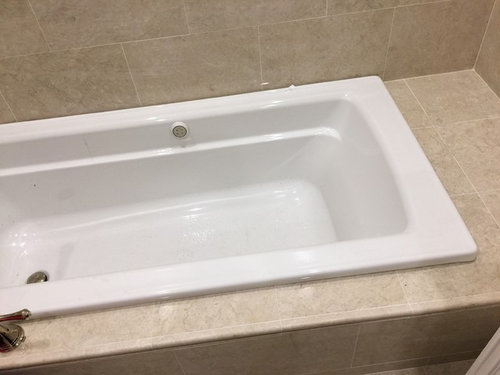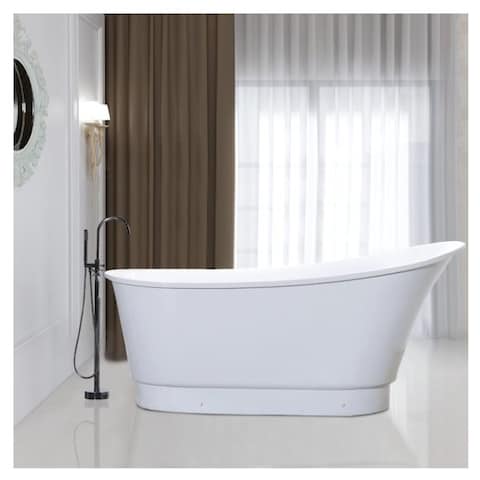Devices You Need to Install a New Bathtub
Devices You Need to Install a New Bathtub
Blog Article
The author is making several good annotation on Tools You Need to Install a New Bathtub overall in this article below.

Setting up a bath tub isn't specifically brain surgery, but it does call for solid plumbing, carpentry, and also sometimes, tiling skills. Changing an old bath tub with a new one is likewise a reasonably difficult job. If the old bathtub is easily accessible, the project can relocate speedily; if you have to open up a wall to eliminate the old bathtub and place the new tub, the job is much harder. In either situation, the task is within a home handyman's skills, although you will certainly need a helper to vacate the old tub as well as embeded in the brand-new one. Make sure you have certified on your own for the job as well as fit attempting it. Instead of working with a contractor to take over a halfway-completed job, it is far better to consider employing one before you begin. Opportunities are you may require a specialist plumber to make tube connections.
This post will assist you mount a new tub in your restroom if you have currently bought a new bathtub and do not need to transform the arrangement of your previous supply of water pipelines.
Your devices and material list need to comprise the following:
Removing Old Taps
If you need to change old faucets with brand-new ones as a part of your installation, then the first thing you need to do is disconnect the water. After doing so, turn on the taps to drain pipes any kind of water continuing to be in the system. The process of removing the existing taps can be quite problematic due to the restricted access that is often the case.
Make use of a container wrench (crowsfoot spanner) or a faucet device to reverse the nut that attaches the supply pipelines to the faucets. Have a fabric prepared for the remaining water that will certainly originate from the pipelines. Once the supply pipes have been gotten rid of, make use of the very same device to loosen up the nut that holds the taps onto the bath/basin. You will need to quit the solitary faucets from transforming during this process. Once the faucets have actually been eliminated, the holes in the bath/basin will have to be cleaned of any old securing substance.
Prior to carrying on to fit the new faucets, contrast the pipe connections on the old taps to the brand-new faucets. If the old taps are longer than the brand-new taps, then a shank adapter is needed for the new faucets to fit.
Suitable New Taps
If the tails of the brand-new taps are plastic, after that you will certainly need a plastic adapter to avoid damages to the string. One end of the connector fits on the plastic tail of the tap and the various other end supplies a connection to the current supply pipes.
If you require to fit a monobloc, then you will certainly need reducing couplers, which links the 10mm pipe of the monobloc to the typical 15mm supply pipe.
Next off, position the faucet in the mounting opening in the bath/basin guaranteeing that the washing machines are in area between the faucet and also the sink. Protect the faucet in place with the producer given backnut. When the faucet is safely in position, the supply pipes can be attached to the tails of the taps. The faucets can either be attached by using corrugated copper piping or with regular tap adapters. The former kind needs to be linked to the faucet ends initially, tightening up only by hand. The supply pipelines can later be linked to the other end. Tighten both ends with a spanner after both ends have actually been attached.
Setting up the Bath tub
Using the two wooden boards under its feet, put the bath tub in the required position. The wooden boards are practical in evenly spreading the weight of the tub over the location of the boards as opposed to concentrating all the weight onto four small points.
The following objective is to make certain that the tub is leveled all round. This can be attained by examining the spirit level and adjusting the feet on the tub up until the spirit level reads level.
To set up faucets, fit all-time low of the outermost adaptable faucet adapter to the appropriate supply pipe by making a compression join; then do the exact same for the other tap.
Turn on the water system and also examine all joints and also brand-new pipework for leaks and tighten them if required. Fill up the bath tub as well as likewise check the overflow outlet and the regular electrical outlet for leakages.
Lastly, repair the bath paneling as described in the supplier's user's manual. Tiling as well as sealing around the bathtub should wait till the bathtub has been made use of at the very least when as this will settle it right into its last setting.
Preparing for the Setup
Firstly, the sustaining framework supplied with the bathroom ought to be fitted (if called for) according to the supplier's guidelines. Next off, fit the taps or mixer to the bath tub. When fitting the faucet block, it is necessary to make certain that if the tap features a plastic washer, it is fitted between the bathroom as well as the taps. On a plastic bathroom, it is also reasonable to fit a supporting plate under the taps device to stop stress on the bathtub.
Fit the adaptable tap connectors to the bottom of both taps making use of 2 nuts as well as olives (sometimes provided with the tub). Fit the plug-hole electrical outlet by smearing mastic filler round the sink outlet hole, and after that pass the outlet via the hole in the bath. Make use of the nut supplied by the supplier to fit the plug-hole. Take a look at the plug-hole outlet for an inlet on the side for the overflow pipeline.
Next, fit completion of the adaptable overflow pipe to the overflow electrical outlet. After that, screw the pipeline to the overflow face which ought to be fitted inside the bathroom. Make sure you utilize every one of the supplied washers.
Attach the trap to the bottom of the waste outlet on the bath tub by winding the thread of the waste outlet with silicone mastic or PTFE tape, and also screw on the trap to the outlet. Attach all-time low of the overflow tube in a similar manner.The bathroom need to now be ready to be suited its last position.
Tiling Around the Tub
In the area where the bathroom fulfills the tile, it is required to seal the joins with a silicone rubber caulking. This is very important as the installation can move enough to split an inflexible seal, causing the water to penetrate the wall in between the bathroom and the tiling, resulting in issues with wetness and possible leaks to the ceiling below.
You can select from a selection of coloured sealers to assimilate your components and also installations. They are sold in tubes and cartridges, and are capable of sealing gaps up to a width of 3mm (1/8 inch). If you have a larger space to fill up, you can load it with spins of drenched paper or soft rope. Remember to always fill the bathtub with water before sealing, to enable the motion experienced when the tub is in use. The sealant can split relatively early if you do not consider this movement before sealing.
Alternatively, ceramic coving or quadrant tiles can be used to border the bathroom or shower tray. Plastic strips of coving, which are easy to use and also reduce to dimension, are likewise quickly offered on the marketplace. It is a good idea to fit the ceramic tiles utilizing water-resistant or water resistant sticky and grout.
Bathtub Installation
How Important Is A Bathtub To Your Home?
High-quality baths, showers, and other bathroom updates are necessary when considering a smart investment in your home. It’s a room that you go to every day and one that is constantly being used by guests.The bathroom is one of the top trafficked rooms in a home and also one of the most valuable in terms of home resale.
Install Piping Before Tub
You will be using your existing drain and waste vent system, but pipes required include the hot and cold water supply lines and a pipe leading to a shower head. A mixing valve and shower head are also needed. Air chambers may be required.
Position the Tub
Lower the tub into place so that the continuous flange fits against the wall studs and rests on 1’x4' or 2’x4' supports. Anchor the tub to the enclosure with nails or screws inserted through the flanges into the studs.
NOTE: Remember, bathtubs and shower stalls may require support framing. A bathtub filled with water is extremely heavy, so check building codes and framing support before installing the tub.
Assemble Drain Connections
Assemble the bathtub drain connections by connecting the tub overflow with the tub drain above the trap, not beyond it. The trap will have a compression fitting that screws over the arm of the overflow assembly.
Place a Pipe For the Shower Head
First, locate a brass female threaded winged fitting and attach it to a framing support via a screw or a nail. Then run a pipe up the wall for the shower head. Sweat or solder the other side of the brass fitting to the top of the pipe.
Attaching Hot and Cold Water Lines
Attach your water lines for both hot and cold by sweating these directly into the hot and cold ports of the mixing valve. The mixing valve will be how water enters the tub’s system, not by the pipes themselves.
Install the Spout
Extend a piece of 1/2 inch pipe, or whichever length is specified in the manufacturer’s instructions, for the tub spout. Sweat on a male threaded fitting at the end of the pipe or use a brass nipple of the proper length and a 1/2 inch cap.
NOTE: At this point you should have your rough-in plumbing work inspected before proceeding further.
Check For Leaks
Restore the water pressure and check the drain connection and the supply pipes for any sign of leaking.
estore the Bathroom Wall
Replace the wall with moisture-resistant drywall as a base for your wall covering. Seal the joints between the wall and your new tub with silicone caulk as protection against water seepage.
https://www.berkeys.com/2016/12/02/bathtub-installation-dallas/

As a devoted person who reads about How to Install a Bathtub Yourself, I assumed sharing that piece of content was a good thing. Sharing is good. Helping people is fun. I treasure reading our article about A Step-by-Step Guide to Installing a Bathtub.
Call Us Now
Report this page